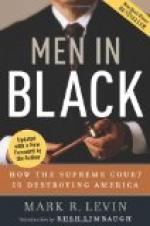A corporation is a legal creation; a lawyer is its mother and nurse. The stockholders having the curious relation of being partners, one not liable for its debts—if its legal affairs are properly handled. And so the company retains a lawyer at a yearly salary to give them advice and that legal protection. Prominent lawyers are taken in as partners of the big banking firms. The large industrial companies have the highest priced lawyers exclusively attending to their affairs. Accident Insurance Companies have enormous legal plants as efficiently organized as factories for handling damage suits and against whom is opposed the inexperienced lawyer of the individual citizen.
Furthermore, the corporation, though composed, in reality, of individuals, is less personal than any one of its members. It is a client without keen emotions, without too distracting hopes, fears, or suspicions. Law is an exacting science, arduous and complex. The lawyer, to do his best, should work quietly, disturbed as little as possible by the human interests at stake. If then the lawyer is correct in preferring the soulless corporate client, it must be that the ordinary individual is either too poor, or too human. Naturally, the corporations are not only the most satisfactory, but the most desirable clients.
The client, although he is the originator of the drama is in reality only a listener. The client in court has so little to say and the lawyers have so much, that it seems unexplainable. The reason is that the lawyers are the fighters, the champions, the knights in the tournament. A legal battle is only enacted because the lawyers are expert fighters. The client having hired them, has little to do but watch. When men first went to law they had no champions; they fought and took what they could, but as civilization advanced men became too busy to engage in legal or actual battles and there grew up a specialized class of fighting men. The lawyers are the hired mercenaries of the commercial structure; and the clients are the ordinary business men. True, some of the lawyers are free lancers, but the majority have the sentiments and standards of their class. There is a natural class antagonism between the client and the lawyer. The client is afraid and mistrusts the lawyer; and the lawyer feels that he must act for an unintelligent client who is ignorant and inexpert. So long as the courts continue to exist on their present plan the difference between client and lawyer will be marked.
An example of a return to formalism and a reactionary development has been the change in what is known as the Poor Man’s Court of New York City. It was originally planned as a court where the client or man unlearned in the law could come in to sue in a simple way. They were simple justice courts. The limit for which he could sue was $100, then $250, then $500, now $1000. Formerly the judges need not be lawyers. A trial was an informal affair. The judge would line up both the parties at the rail. One side would tell their story, the other side would interrupt and finally get a chance to tell theirs. The judge would figuratively pat them on the head, decide the case, and tell them to go home and be good.




